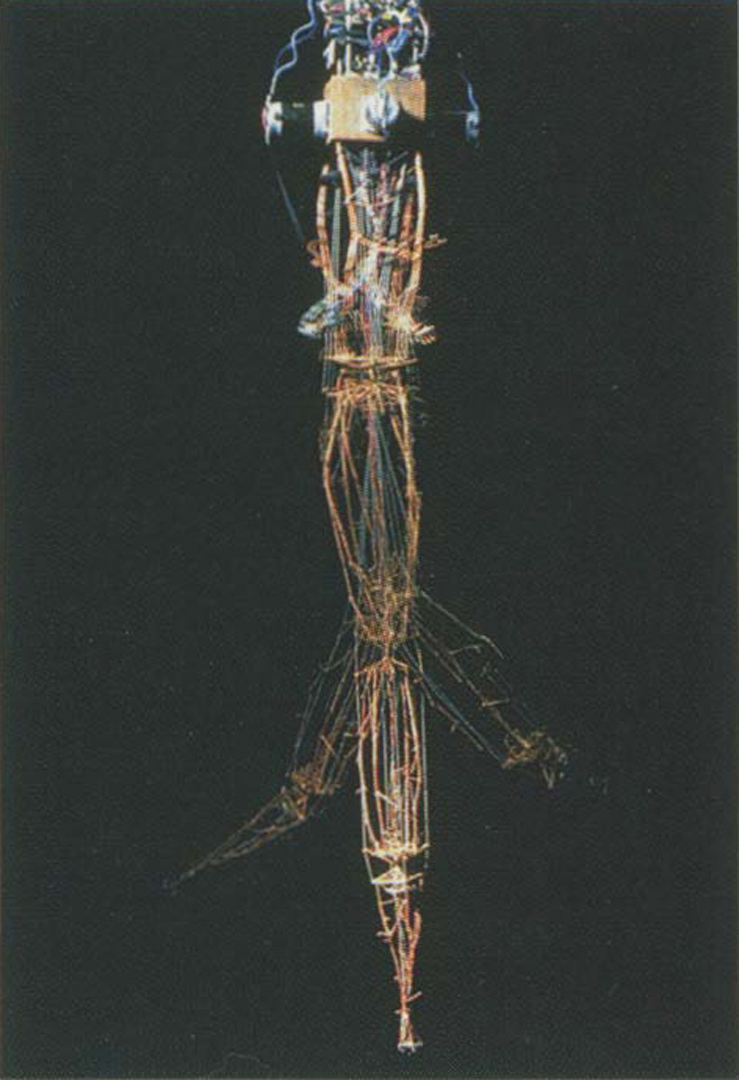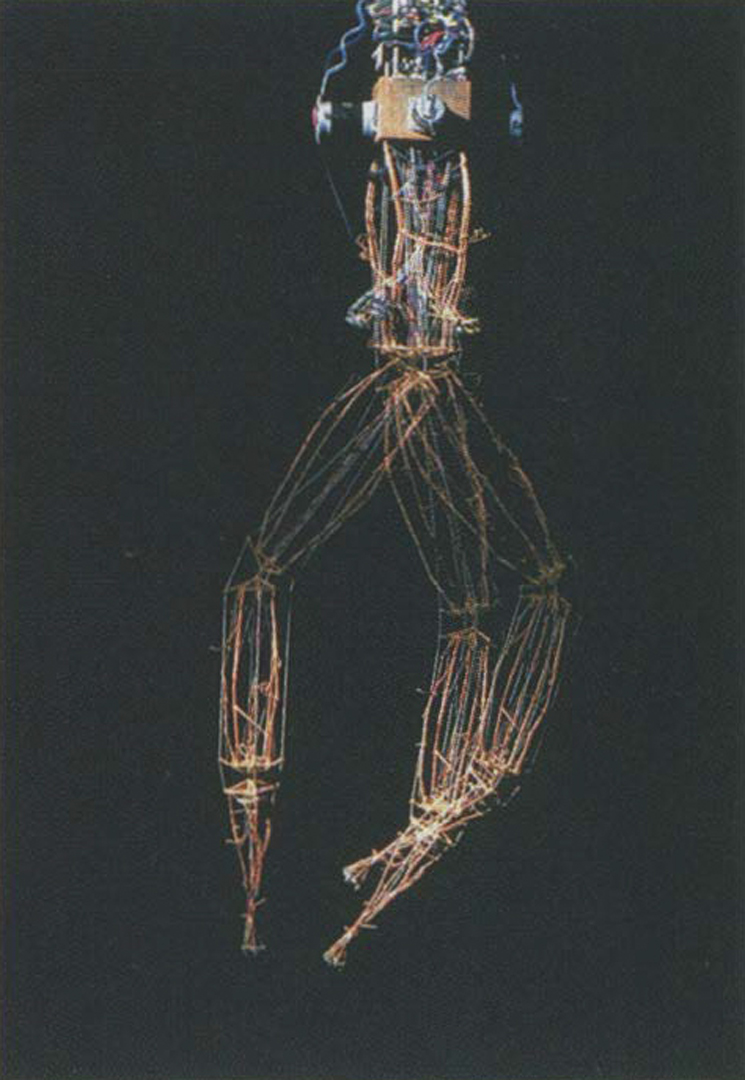Kenneth E. Rinaldo, Mark S. Grossman: The Flock
Artist(s):
Title:
- The Flock
Exhibition:
Category:
Artist Statement:
The Flock is a group of cybernetic sound sculptures that exhibit behaviors analogous to flocking found in natural groups such as birds, fish, or bats. As a class of social interactions, flocking behaviors are particularly interesting because they demonstrate characteristics of supra-organization, of a series of animals or artificial life forms that act as one. Flocking behaviors are complex, interdependent interactions that require individual members to be aware of their position in relation to others.
We are approaching the task of creating a sculptural and musical flock by designing and building three or more independent ruledriven systems that will interact to create one global behavior. The key concept is emergence, the coming together of systems with no central controller guiding their behavior. The global behavior is allowed to evolve naturally out of the local interactions among the systems. The results will be an illusive aesthetic that is complex, chaotic, nonlinear and often lifelike.
When participants encounter The Flock, they are drawn into an acoustic, kinetic, and infrared network. By producing their own sounds and movements, the participants will act in concert with the arms. Thus the environment affects the form and the form modifies the environment, which then affects the form again, ad infinitum.
Craig Reynolds has had much success with creating on-screen flocking behaviors with artificial organisms he calls “Boids.” These simulated birdlike entities have been able to display complex group motion while avoiding obstacles and generally displaying bonafide flocking.
After setting out to create our own computer sculptures we discovered llhan lhnatowicz had taken a step in this direction in 1972. He built a creature called Senster (a computerized sculpture), which was able to dynamically sense its environment and, under software control, modify its behavior based on past experience and current environmental inputs.
As Christopher Langton and other artificial life researchers have pointed out, a properly organized structure need not be living (or even physically embodied) to display life processes. By this token The Flock will exhibit life processes; and since it is a physical embodiment, it will be subject to a far richer set of environmental stimuli and constraints than would a pure “in silico” organism. This helps bring the system dynamics into the realm where they can be better apprehended.
In The Flock, ceiling-mounted arms will detect sound with their microphone arrays and movements of the participants with their infrared eyes. The responses will depend on the personalities of the individual arms as they interact with the group (the other arms and the human participants).The software is designed to allow a wide range of learned and unpredictable responses, with an emphasis on cooperation to produce a group aesthetic.
The artificial creatures of The Flock communicate among themselves with audible telephone tones. For instance, an arm can sing its position to all the other arms, allowing them to follow its lead. This tonal language will also permit the programming of various dominance submission behaviors. In addition, the arms sample sound fragments from the environment and can play them back through a speaker, providing a medium to communicate to the human participants additional cues as to the state of the “organism”. The infrared proximity sensing allows a vocabulary of attraction and repulsion motions in response to the triangulated positions and movements of participants.
By seamlessly integrating electronic and organic elements, we are asserting the confluence and co-evolution of organic and technological cultures. The branching and joining of the physical forms echoes the temporal flow of interactions within The Flock. It is imperative that technological systems be modeled on the principles of general living systems, so that they will inherently fuse to permit an emergent, interdependent earth.
We want to thank Joe Kennedy, Silicon Graphics engineer, for his invaluable contributions to this project.







